Past & Future
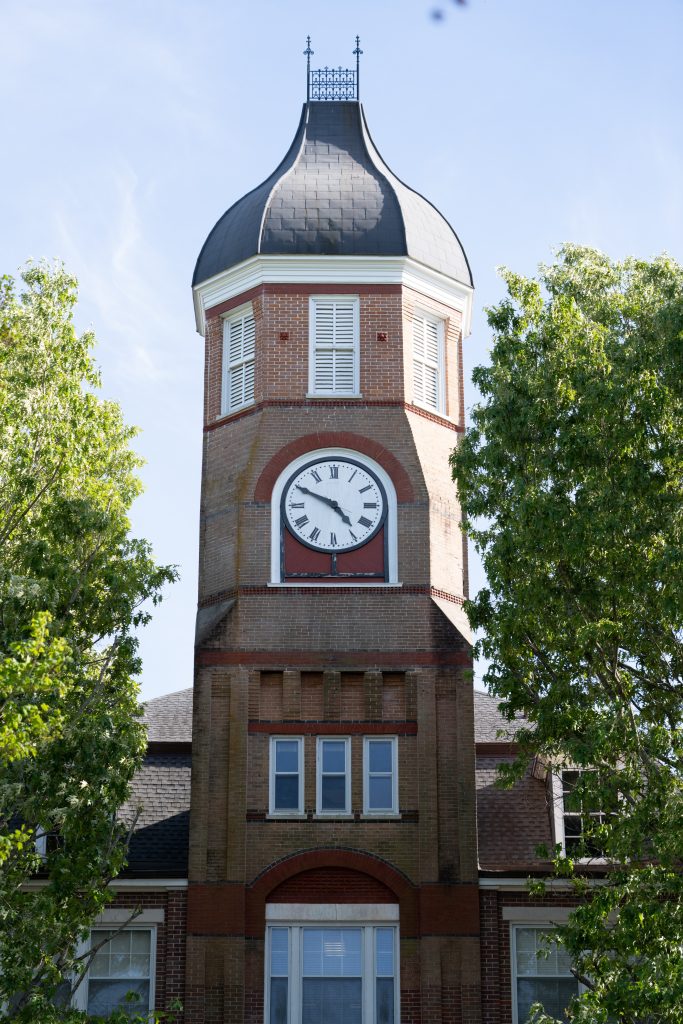
When you imagine a university, what comes to mind? Perhaps you envision a picturesque campus on a sunny day with students lounging on a green lawn, studying or playing games. Or maybe you picture a classroom with a professor at the front, scribbling equations on a chalkboard while students frantically take notes. Whatever comes to mind, one thing is certain – the focus of any university is students.
From anecdotal Homecoming stories to the university factbook, the strength of the university always shines bright. Our university is dedicated to providing a personalized education to each and every student, after all “we bless by light”. Remember your time at the university. Recall the classrooms and classmates.
While the past seems perfect, the future brings challenges. The biggest obstacle facing the university is its capacity to adapt and stay relevant in a constantly evolving society.
CHANGING LANDSCAPE OF HIGHER EDUCATION
Effects of the COVID-19 Pandemic, lower birthrates, inflation and public opinion are a few of the issues facing institutions of higher learning across the nation. Since the onset of the pandemic, the Chronicle of Higher Education reported as of fall 2022 nearly 1.3 million students have disappeared from college campuses. Since 2020, college attendance of undergraduates dropped almost 10% following a 4.7% drop the previous spring, a sharper decline than was expected, according to the National Student Clearinghouse Research Center. [1] The Bill & Melinda Gates Foundation reported in the fall 2022 only 46% surveyed graduates said they planned to go to college or to finish their degree. High school graduates are choosing positive mental health and financial stability as their top goals for the future. [2]
The state of Mississippi reflects the national trends of students. The Mississippi Department of Education reported 29,654 graduates for the class of 2022, slightly higher than the class of 2015 at 29,320. Of the 2022 class, 15,315 enrolled in a four- or two-year institution, a number significantly lower compared to the class of 2015 when 19,286 enrolled. Impacts of the 2008-9 recession have colleges and universities facing a demographic cliff brought on by falling birthrates. Estimates by the Western Interstate Commission for Higher Education expect the public high-school graduation rate to peak in 2025 or 2026, then steadily decline indefinitely.[3] Some projections estimate the pool of applicants for two- and four-year regional institutions could contract as much as 10%. [1] Not only are fewer high school graduates choosing higher education, but the pool of students for universities to recruit also is drastically shrinking.
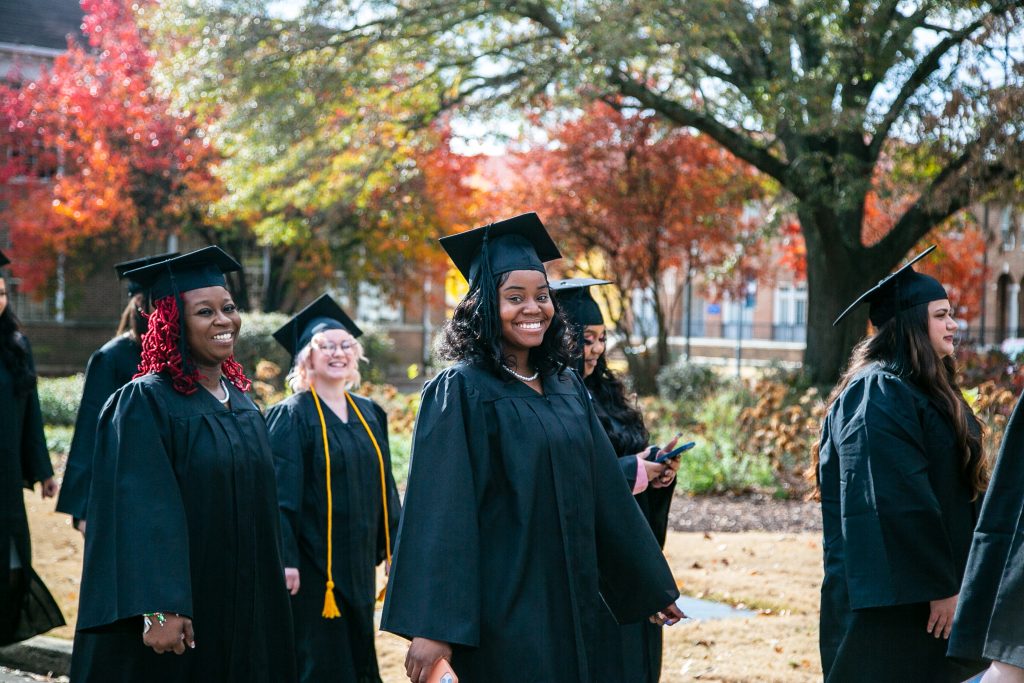
When students choose to pursue higher education, they select a college or university close to home. Seventy percent will attend an institution within two hours of their residence. The majority of four-year college students attend an institution under an hour’s drive away. [4] For the state of Mississippi, the National Center for Education Statistics is predicting a 23.2% decrease in public high school graduates from 2012-2013 to 2030-2031. Look next door to the state of Alabama, we find a 5.6% increase. [5] Within a 60-mile radius of the university, there are two SEC universities, two community college campuses and a Communiversity. If that range is extended to 150 miles, there are 54 physical campuses. That number more than doubles to 110 when counting online colleges and universities.
“Regional universities are caught in the middle,” said Mississippi University for Women President Miller. “Nationwide, regional universities had enrollment decreases while the flagships had an increase. Flagships are able to continue growing. They have other sources of revenue and are able to add scholarships. Community colleges are reaching up.”
For 2022-2023, the university’s funding was 51% dependent on tuition for revenue. For the fiscal year 2010-2011, tuition and fees represented 41% of the budget.
WHO WE ARE
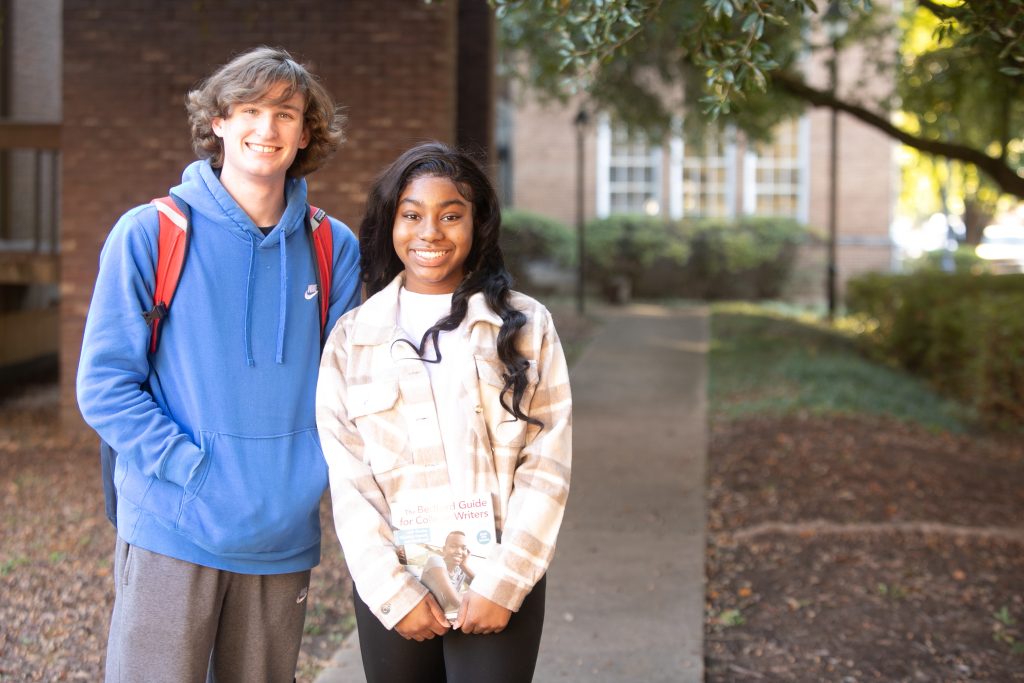
In the fall 2022, the university reported an unduplicated enrollment of 2,339 students. The student body is 77.9% female and 22% male. When broken down by race: 59.2% white, 35.1% black/African-American and 5.7% other including Hispanic/Latino, Hawaiian/Pacific Islander and multi-racial among others. Nontraditional students, those 25 years of age or older, account for 26.6% of the unduplicated enrollment. The average student age is 24.6 years old.
In 1979, the university recorded a headcount of 2,307 students. While there have been some higher years of enrollment – above 3,000 from 1994-1998- enrollment has remained relatively flat for more than four decades. In 2016, the university recorded an annual headcount of 2,956, the highest total in the past 10 years. That same year, the university enrolled 278 first-time degree seeking freshmen. The myriad pressures and challenges, mentioned earlier, have led to 35% drop of first-time, full-time degree seeking freshmen in the past five years.
In 1992, the university reported male students made up 21% of the student population. In 2022, male students accounted for 22.1% of the student population. Ranging from 14 to the highest of 22%, male enrollment has not significantly increased.
ENROLLMENT FOCUSED
In November 2022, Dr. David Brooking was announced as the executive director of enrollment management. Brooking previously served as the director of the Student Success Center since 2014.
For Brooking, higher education isn’t about the framed document that hangs on the wall. For him, a university provides education not credentials. The university offers experiences, advancement, socioeconomic mobility and preparation for a lifetime of learning. Throughout his career, Brooking has worked at four institutions of higher learning, but he didn’t find that special something until arriving to Columbus.
“Being a smaller institution really makes opportunities available for students. The family atmosphere, the level of comfort that we give our students, no matter who they are, what background they come from, I think that’s something we have to offer,” said Brooking.
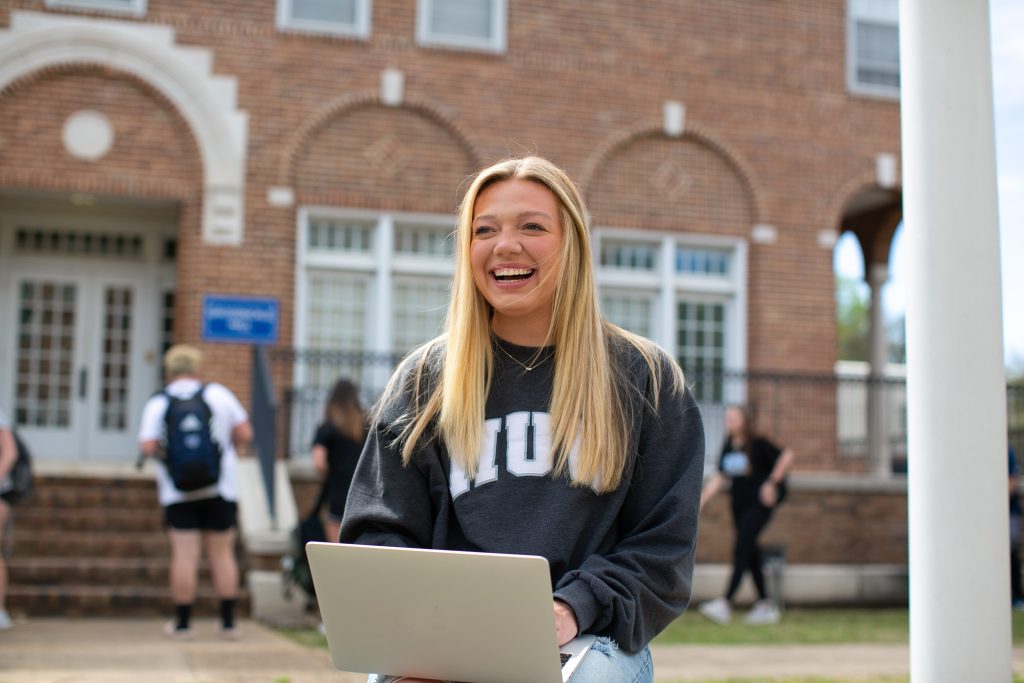
Since taking the enrollment reins, Brooking has elevated the enrollment efforts of the university. In 2021, the university began using a customer relation management system titled Slate. The CRM tool, used by more than 1,000 colleges across the nation, is designed to strengthen communication and exchange information between the Office of Admissions and potential students. From financial aid solutions and communication plans to predicting the likelihood for enrollment, the Office of Admissions is advancing in the usage of the complex system. Brooking also said the office has increased training for admissions counselors to further build relationships with students and created the position of CRM coordinator for data management and in-house assistance. Technology is not the only focus to improve enrollment. Reach is important to further sustain the university. Each year, university acquires nearly 10,000 names from the ACT, a standardized test used for college admissions in the United States. More names of high school seniors and juniors will come in the future, nearly five times the amount previously purchased. More prospective students and earlier targeting will be the result. These names are not bought at random, through the assistance of Ruffalo Noel Levitz (RNL) – a leading provider of higher education enrollment solutions – the university is prioritizing counties and schools across Mississippi, Alabama and Tennessee. Additionally, parents will play a key role in communications. A new parent engagement system launched in March 2023. Every parent of students who have applied will receive information regarding programs, deadlines, events and student services.
“Each entity has increased our access to students by allowing us to communicate with them more effectively. Slate has strengthened communication between our prospective students and our admissions office. As we build out, we will open up lines of communication between our office, school counselors and possibly community-based organizations.” said Iika McCarter, director of admissions.
INCLUSIVE UNIVERSITY WITH AN EXCLUSIVE NAME
“A name should open doors, not close them”
President Nora Miller.
President Miller wants to shout who we are. The university offers a thriving smaller learning environment. We offer opportunities for students who are not interested in a campus with tens of thousands of students. Our professors are both engaging and caring, taking the time to get to know each student by name. The university offers unique programs – nursing, culinary, healthcare management, speech therapy. This makes 1100 College Street a pathway for success and empowers students to be bold to reach their potential and pursue their dreams.
“We just need a name that allows people to stop and listen to what we have to say and who we are,” said Miller. “It has been 40 years since the university was a single-sex institution. We are having to spend all of our real estate and elevator speeches saying what we’re not. We are not able to talk about graduating with the least amount of debt, nursing graduates staying in the state, no outof- state tuition, online programs or social mobility. We are stuck answering questions about being a single sex institution and about our name.”
In 2008, when the university last considered a name change, a consulting group identified 45 colleges and universities that were all-female or perceived as all-female.
All were private except for Mississippi University for Women. After 14 years, one in five of the institutions that were considered to be exclusively for a particular gender have shut down, merged with another university or been identified as “likely to perish.”
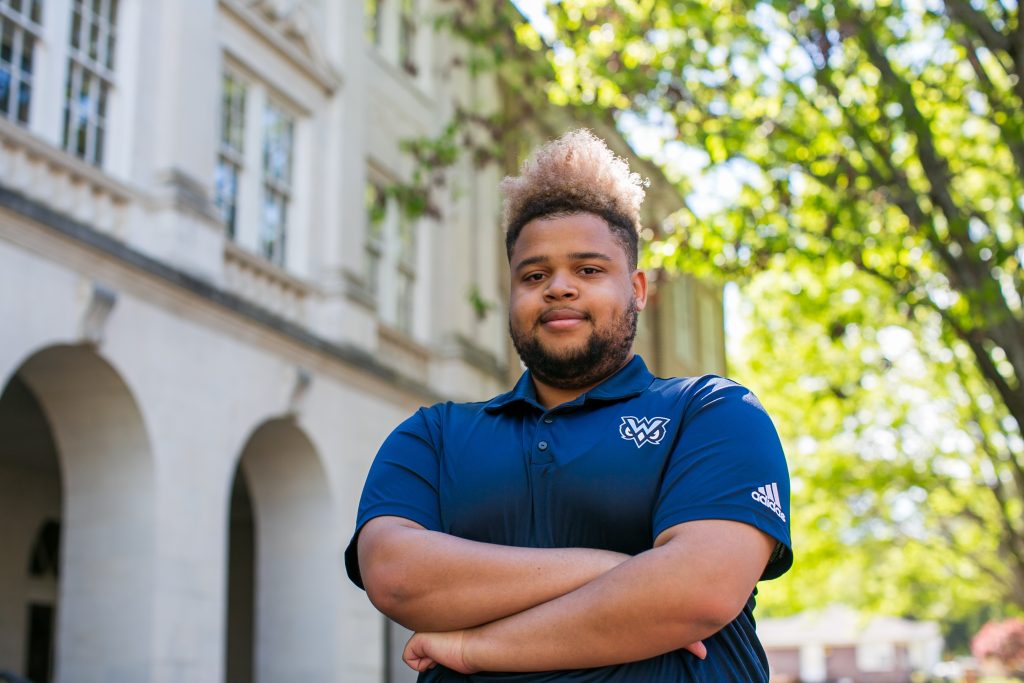
National research shows only 3% of college-age women want to attend a single-gender college. And 0% of men believe they can attend a perceived all girls college.
President Miller attended Mississippi University for Women when it was a single-sex institution, noting that it was fun, but times have changed. There were fewer cars on campus and Starkville was considered a long-distance phone call. Students maybe worked 10-12 hours per week, now they have full time jobs. Online classes were unimaginable. Internet, social media and Facetime have replaced letters home.
FOR MILLER, A UNIVERSITY IS GREATER THAN ITS NAME.
“What we really love it for are the opportunities that it gave us. The friendships we experienced. Relationships we had with faculty and with other people. That’s what we love about the institution. I want a package we can use to market that. Whatever the name is, it has to be a name that does not exclude,” said Miller.
Forty years from now, President Miller wants the university to still be the No. 1 nursing program in the state. She wants classrooms across the state to be filled with educators from the university. The finest cuisines across the nation will be prepared by chefs from the new culinary building. A recently launched health care navigation concentration will help an aging population to understand and navigate a multi-layered healthcare system.
REFERENCES
1. Fischer, K. (2022, August 12). The Shrinking ofHigher Ed. Retrieved from chronicle.com/article/theshrinking-of-higher-ed.
2. Bryant, J. (2022, October 7). Why High SchoolGraduates Are Saying No to College | BestColleges.Retrieved from bestcolleges.com/news/analysis/whyhigh-school-grads-are-saying-no-to-college/.
3. Boeckenstedt, . (2022, March 22). Will Your CollegeSurvive the Demographic Cliff? Retrieved fromchronicle.com/article/will-your-college-survive-thedemographic-cliff.
4. Wozniak, A. (2018, March 22). Going Away toCollege? School Distance as a Barrier to HigherEducation | Econofact. Retrieved from econofact.org/going-away-to-college-school-distance-as-a-barrierto-higher-education.
5. National Center for Education Statistics. (n.d.). Publichigh school graduates, by region, state, and jurisdiction:Selected years, 1980-81 through 2030-31. Retrievedfrom nces.ed.gov/programs/digest/d21/tables/dt21 219.20.asp.
